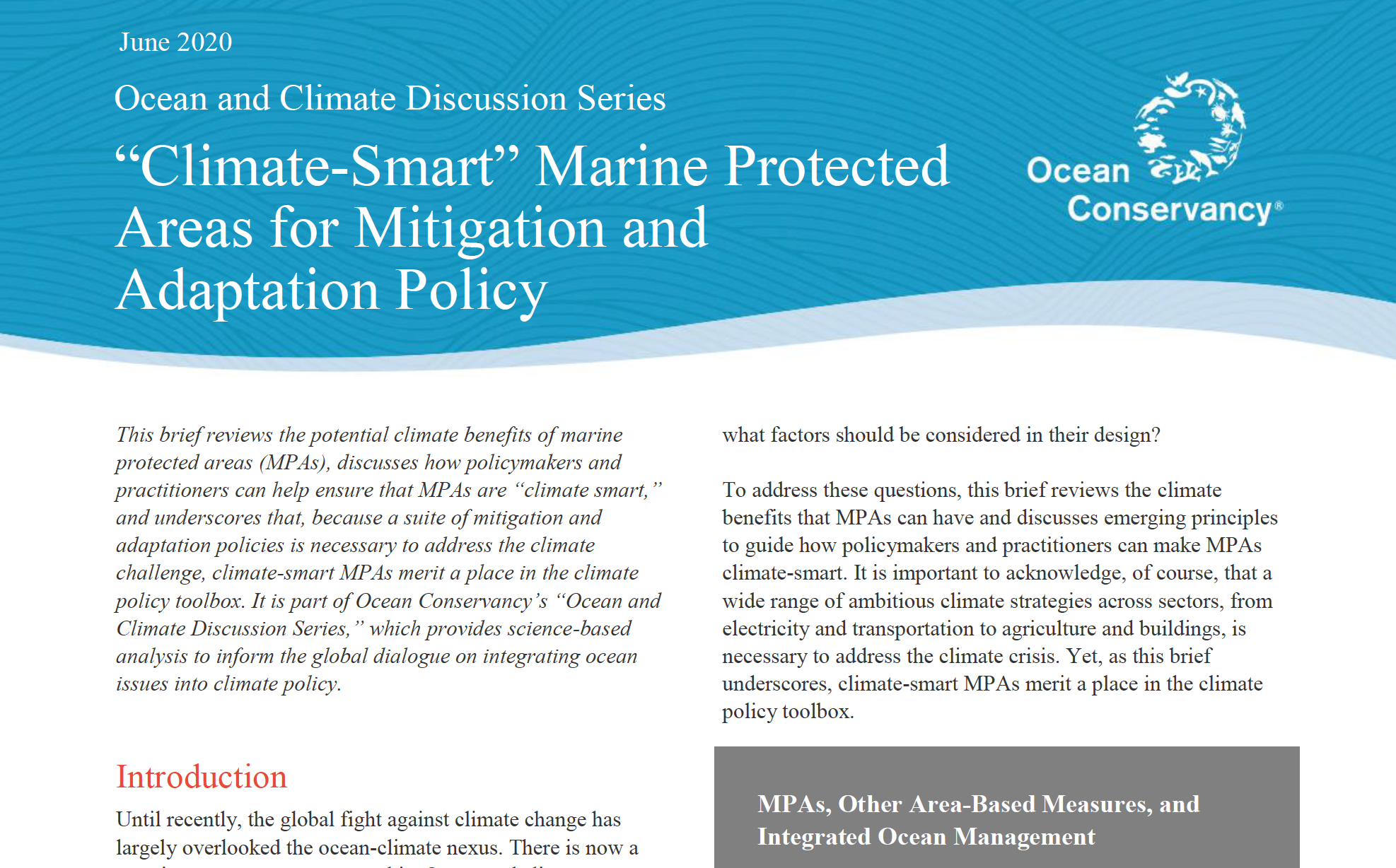“Climate-Smart” Marine Protected Areas for Mitigation and Adaptation Policy
This brief reviews the potential climate benefits of marine protected areas (MPAs), discusses how policymakers and practitioners can help ensure that MPAs are “climate smart,” and underscores that, because a suite of mitigation and adaptation policies is necessary to address the climate challenge, climate-smart MPAs merit a place in the climate policy toolbox. It is part of Ocean Conservancy’s “Ocean and Climate Discussion Series,” which provides science-based analysis to inform the global dialogue on integrating ocean issues into climate policy.
Read “Climate-Smart” Marine Protected Areas for Mitigation and Adaptation Policy here.
Until recently, the global fight against climate change has largely overlooked the ocean-climate nexus. There is now a growing movement to correct this. Ocean and climate champions—including nations, non-federal governments, and nongovernmental organizations—are creating ocean-climate leadership coalitions, working to elevate ocean issues in international climate negotiations, and incorporating ocean issues into their own climate goals. Broadly, these efforts are focused on dramatically reducing economy-wide greenhouse gas pollution, given the profound damage it is causing the ocean through effects such as ocean warming and acidification. They are also focused on ensuring that governments do not overlook the full suite of sustainable ocean-based measures that can reduce greenhouse gas pollution and build resilience to its impacts.
Among these ocean-based measures, policy experts have increasingly promoted marine protected areas (MPAs) in general and “climate-smart” MPAs in particular (1). Yet there is not widespread understanding in the mainstream climate community—which historically has focused more on energy sectors than on natural climate solutions—of how MPAs can contribute to climate mitigation and adaptation and what it means for an MPA to be climate-smart (i.e., to have enhanced climate benefits). How can MPAs contribute to carbon sequestration? How can MPAs help communities adapt to climate-driven changes to the ocean and ocean ecosystem services? How can MPAs help build ecosystem resilience and preserve biodiversity in ways that account for future climate impacts? To create MPAs with enhanced climate benefits, what factors should be considered in their design?
To address these questions, this brief reviews the climate benefits that MPAs can have and discusses emerging principles to guide how policymakers and practitioners can make MPAs climate-smart. It is important to acknowledge, of course, that a wide range of ambitious climate strategies across sectors, from electricity and transportation to agriculture and buildings, is necessary to address the climate crisis. Yet, as this brief underscores, climate-smart MPAs merit a place in the climate policy toolbox.
